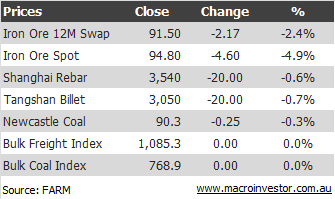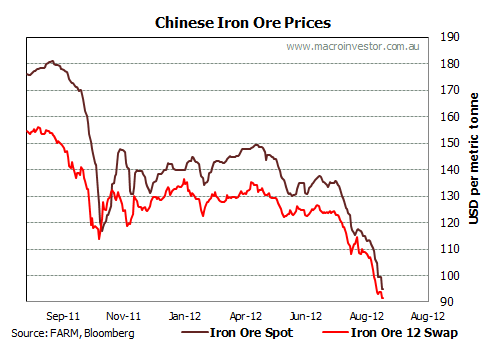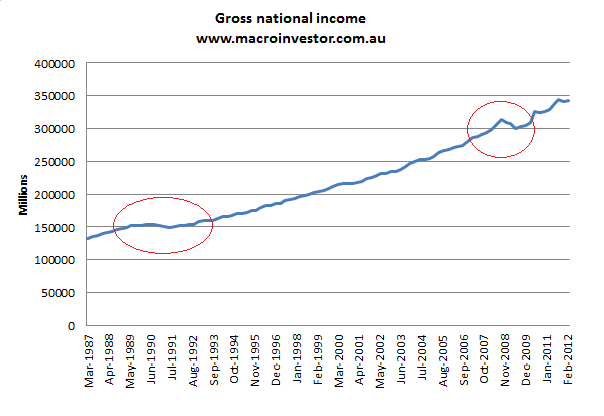
Yesterday in the land of commodity research, various research houses attempted to catch up to the reality of a falling iron ore price. Until this recent price collapse (down 30% in a couple of months to $95) iron ore prices were widely considered to have a “price floor at $120”. The price floor notion was based upon the idea that Chinese iron ore producers have a marginal cost of $120 and so would close down if the price fell below that level, removing supply and supporting prices. However, the “price floor” argument had a fatal flaw. It assumed seamlessly growing demand in China and what has caught everyone by surprise is that is no longer the case.
Indeed, Chinese steel prices are still falling after a year long correction:

And thus, so are iron ore prices:

It is very difficult to know where the bottom is for the iron ore price. We have clearly entered some kind of capitulation phase in the correction and the technical retracement chart that suggested a $75 target is no longer looking at all fanciful:

But what we can say for sure is that every time iron ore and coking coal falls 1%, the terms of trade falls about one third of that. If we add in the recent thermal coal price correction then we are looking a terms of trade shock approaching 13% in the last couple of months alone. With a high dollar, the real shock is worse still.
It is widely known that Australia’s income growth has become dependent upon high terms of trade, instead of other sources such as productivity growth. In effect, over the past decade we’ve enjoyed a huge pay rise owing to the high price of commodities. Now we’re taking the equivalent of a big pay cut as a national income recession looms. The last two occasions we experienced significant income falls as a nation both were difficult economic periods:

This time around we have some insurance in an onging and wider boom in LNG investment that is not so far effected by the commodity price falls. But we’ve already seen big mining projects getting shelved. There will be more. Income recessions usually involve rising unemployment and some some hit to consumption. Whether this turns into something worse will depend upon the response to the rate cuts that will come if these price falls continue or do not reverse.

